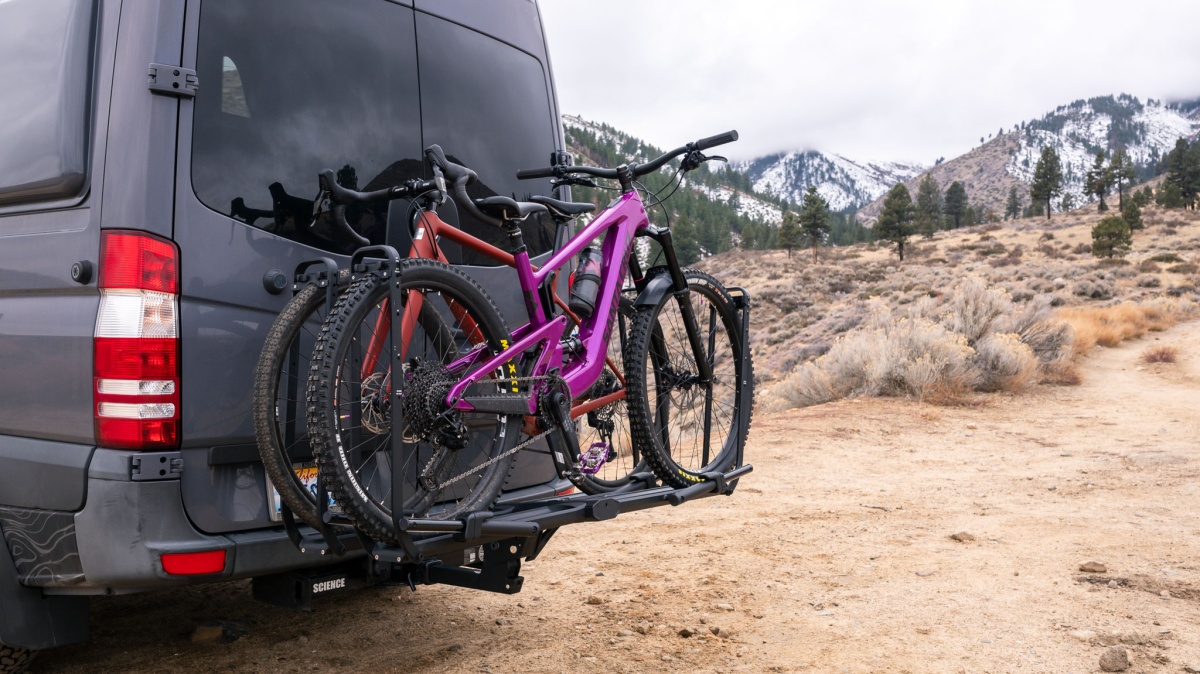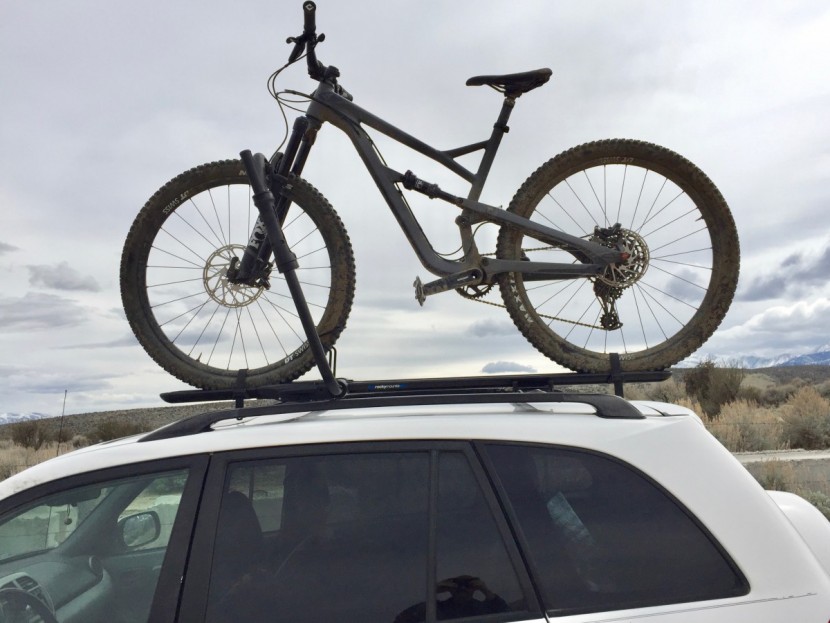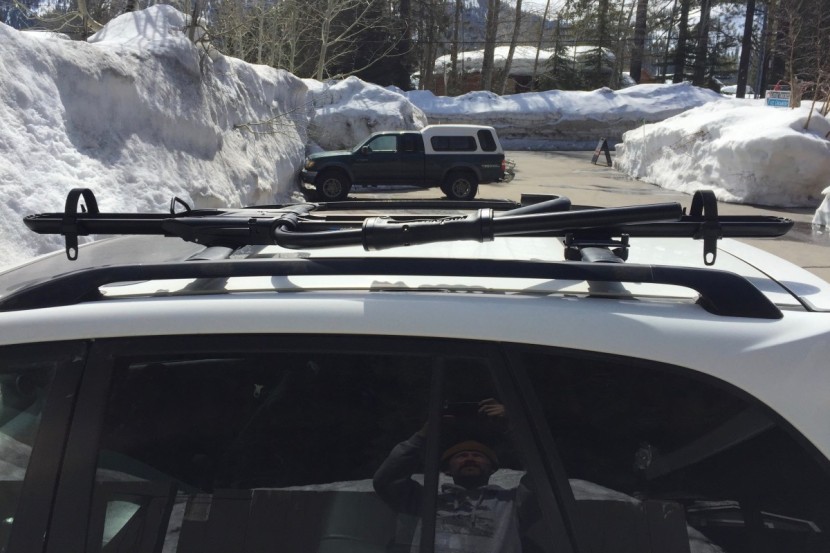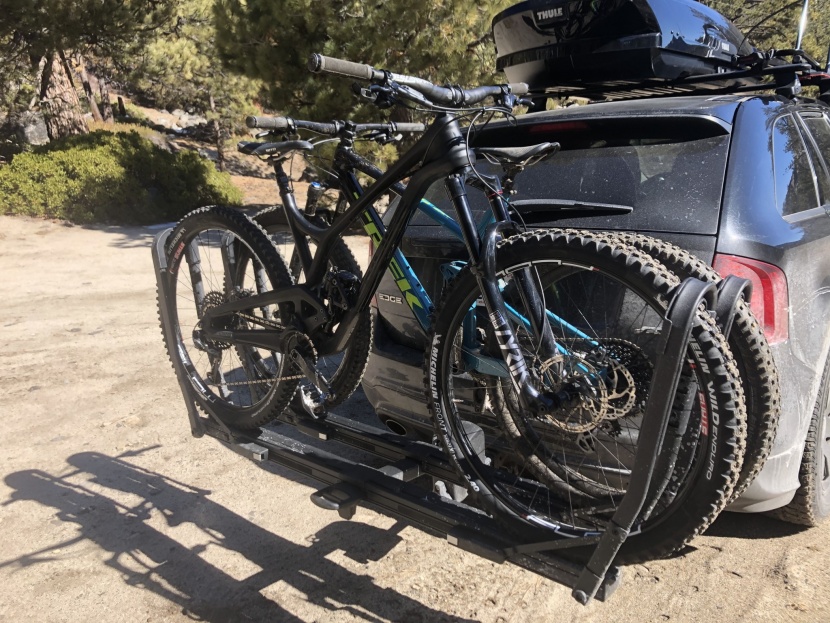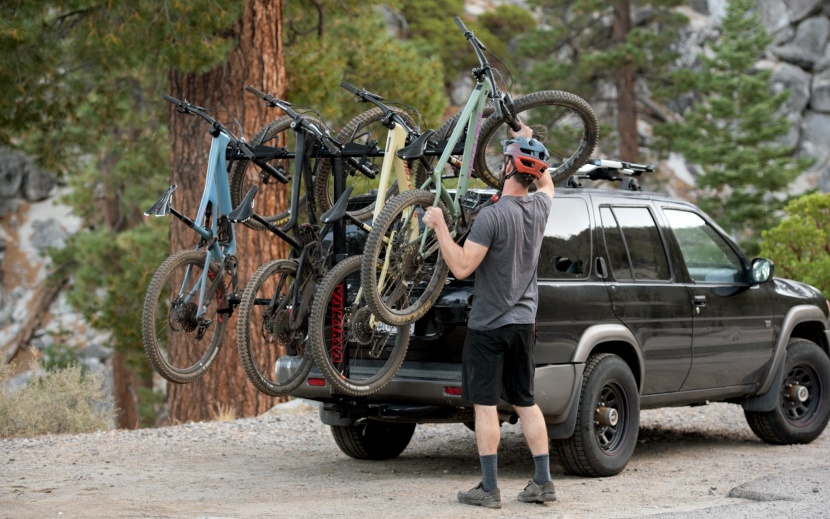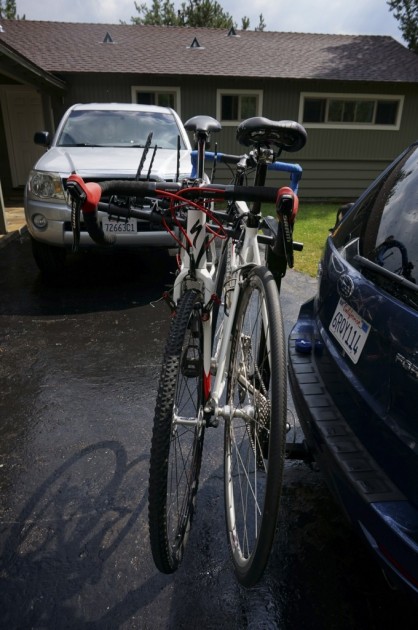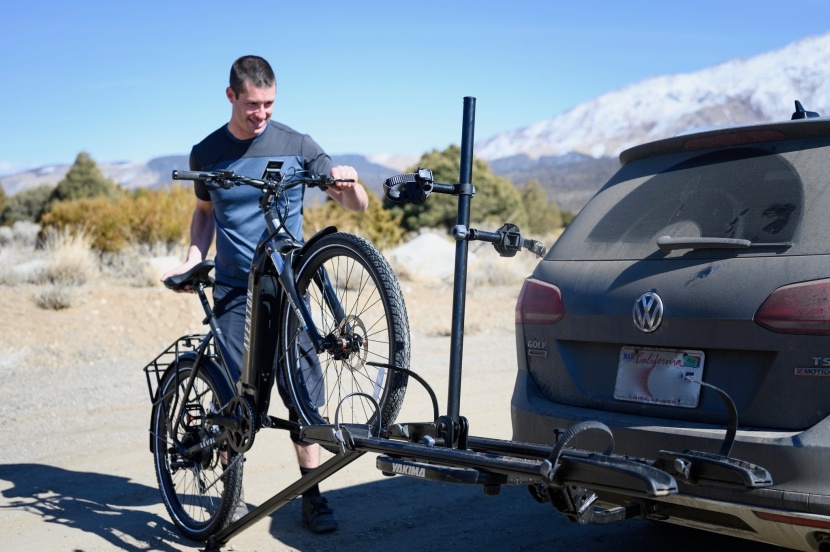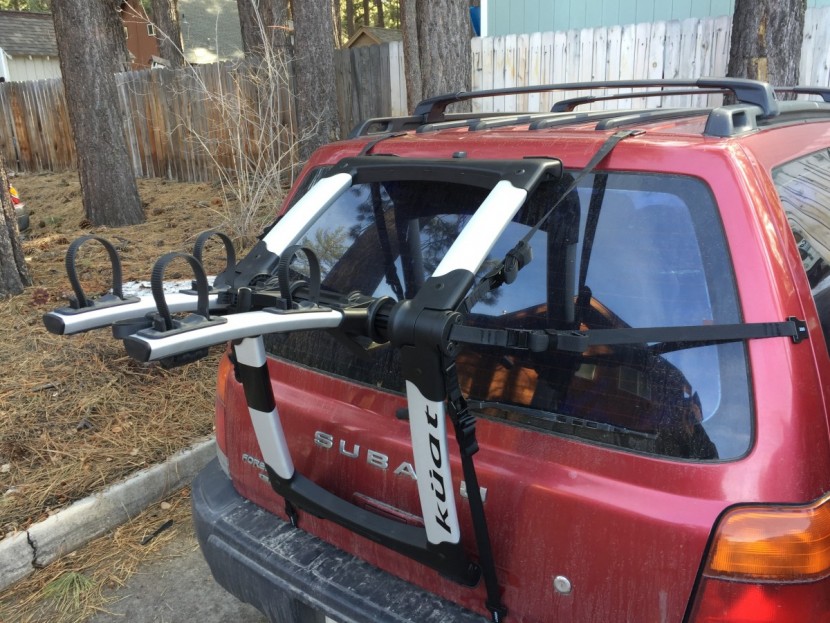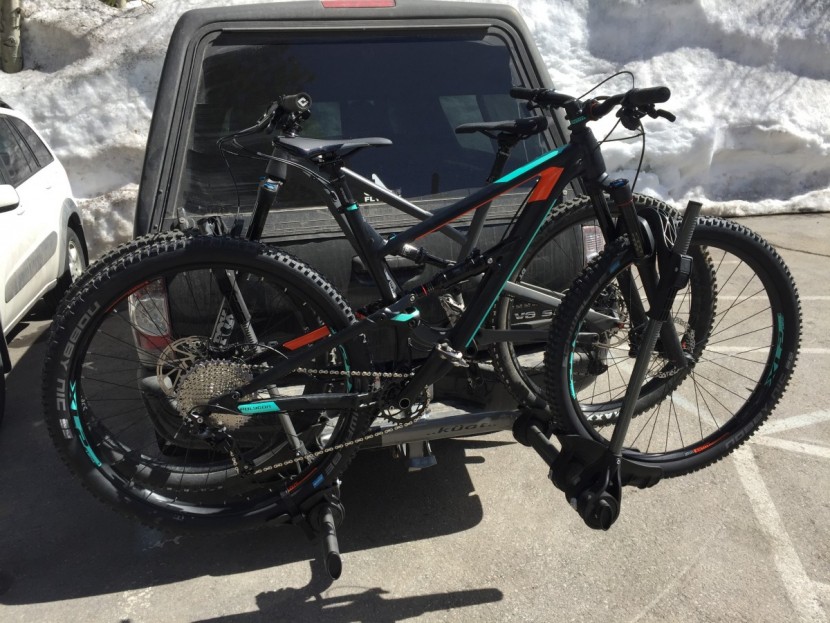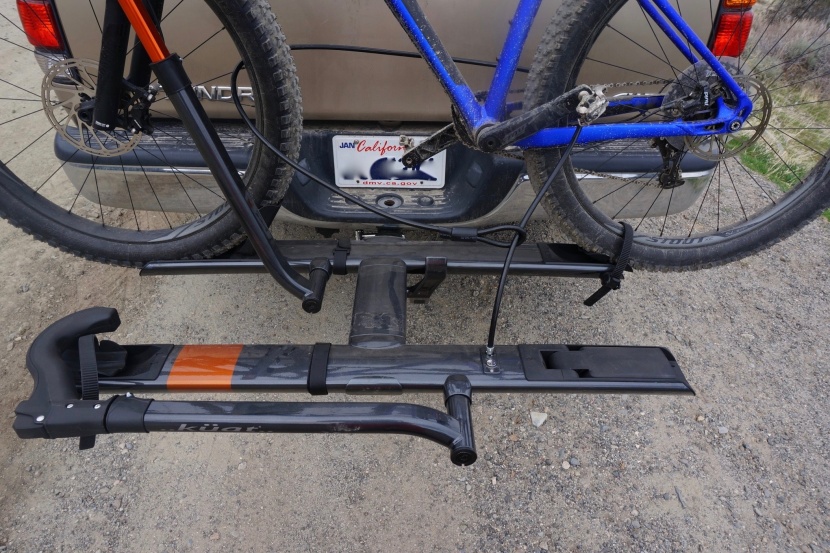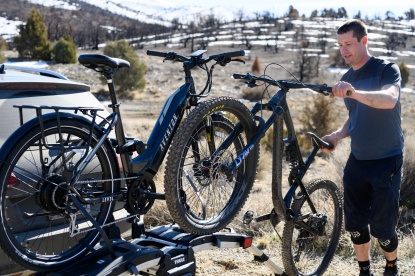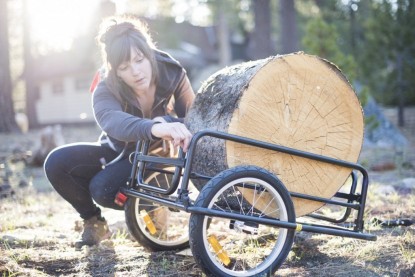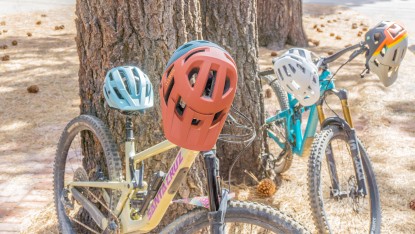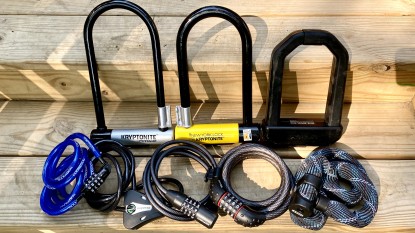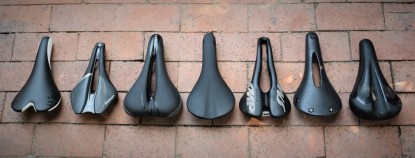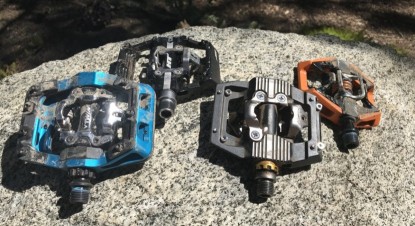Why You Need a Bike Rack
Purchasing a bike rack is a big decision. Further complicating the process, there are a plethora of racks on the market. We keep an ear to the ground to find the most compelling bike racks, these 26 racks are the best available options. After purchasing, weighing, measuring, using, and thrashing these racks for months, we conducted a thorough comparative analysis. There are several factors to consider, including your vehicle type, the number of bikes you need to carry, the type of bikes you have, the style of rack you want, and how frequently you intend to use them. All of the products we tested fall into three basic categories based on the attachment style to your vehicle: roof, hitch, and trunk (or hatch) mounted racks.
Styles of Bike Racks
The three main styles of racks are listed below, along with the main pros, cons, and details to consider for each style.
Roof Racks
If you drive a truck, SUV, van, or vehicle with a high roof (over five feet), you may think twice about purchasing a roof-mounted system. The combination of a tall roof and roof-mounted system requires the user to lift the bike over their head to get it onto the rack. Depending on your height and physical strength, this may not be a worry for you, but it can be inconvenient, especially when you consider everyone who will be using the rack. Bike weight should also be a consideration, as the heavier the bike is, the more difficult it will be to lift onto the rack. Even if lifting the bike onto your rack isn't a problem for you, you will likely only end up limited to carrying two bikes (which requires the purchase of a second rack) because reaching the center of the roof will be far more difficult.
Roof models are a much more reasonable option for vehicles with lower roof heights. The vehicle's factory and aftermarket crossbars are multi-purpose. They can typically carry other gear and equipment, such as skis, surfboards, cargo boxes, or luggage, along with your bike. In the case of factory-installed crossbars, it is crucial only to use roof rack styles that are compatible with those bars. If your vehicle doesn't have factory crossbars or horizontal rails, they are available from Yakima or Thule as a separate purchase. While some roof racks are simple to install, you'll probably be more inclined to leave them on your vehicle for an extended period instead of installing and removing them regularly. For convenience, we leave ours on even when not in use, as they typically aren't in the way or preventing access to any part of the vehicle.
Roof racks can also be a great option for city dwellers who find themselves in traffic frequently. Having the bike safe on the roof is more attractive than on the vehicle's rear. Nobody wants to get rear-ended in bumper-to-bumper traffic and have their bicycle crunched.
It is important to note that when bikes are loaded on your roof, the additional height of the bikes makes the overall height of your vehicle significantly higher than usual. This added height makes your garage, parking garages, and most restaurant drive-throughs a no-go until the bikes are removed. People often damage their bikes, racks, and vehicles by forgetting about their bikes on the roof and attempting to drive into their garage. Roof mount rack systems (including cross bars) are a versatile investment, allowing you to start with one or two units and add more accessories as your needs change over time or seasonally. Some roof mount racks require the removal of the front wheel and secure the bike with the front axle of the fork, and the rear wheel, while wheel-on roof racks secure the bike by the front wheel. Wheel-on roof racks require you to lift the bike slightly higher to load it, but they save you the task of removing the front wheel.
Hitch Mount Racks
If a roof-mount-style rack isn't right for you, a hitch-mount rack may be a better alternative. There are several styles of hitch-mounted racks, which are explained in greater detail below.
Platform Hitch Mount
Examples of platform or tray-style hitch mount racks include our Editors' Choice Thule T2 Pro XT or the less expensive RockyMounts MonoRail. These support the weight of bikes on a tray and secure them by clamping the front wheels or down on the frame. Models that clamp down on the front wheel are typically the most popular because the rack makes no contact with your frame, a consideration for people with carbon frames, oddly shaped tubing, and for keeping your bikes in pristine condition. Hitch mount racks have a low loading height and offer versatility because they carry virtually any type of bicycle. Some models can expand their carrying capacity up to four bikes with add-on accessories. People with heavier bikes such as downhill, enduro, or e-bikes would be smart to consider tray-style hitch racks, offering the lowest loading heights available, with some models offering up to 60 lbs of weight capacity.
Vertical Hitch Mount
Popular with the mountain bike crowd, vertical hitch mount racks hang the bike from the fork's crown or front wheel. Vertical racks that hold the bike by the fork crown can suffer from limited versatility and typically only work with mountain bikes with suspension forks. These racks typically hold the bikes to avoid bike-on-bike contact with good ground clearance for shuttling on rough dirt roads. One of the biggest advantages of vertical racks is that they can carry up to six bikes, as with the North Shore NSR-6, also offered in 4-bike versions.
Support Arm Hitch Mount
These hitch mount racks have a tall mast with two support arms extending to hold the bikes by the frame. Support-arm style racks still provide a relatively low loading height, but the bikes are supported and secured to the arm of the rack via the bicycle frame.
This style has the notable drawback of using the frame as the primary point of attachment, and some models have compatibility issues with full-suspension mountain bikes or frames with unusual shapes.
Ramp-Loading Hitch Mount
Electric bikes have exploded in popularity, and many manufacturers are making racks to address the challenges associated with loading and transporting these heavy bikes. Both the Thule EasyFold XT 2 and the Yakima OnRamp are platform hitch mount racks that have ramps that can be used to roll your heavy bike into position on the rack. Both racks have 60 lb per bike weight limits, making them compatible with most electric bikes. However, remember that some electric bikes have much wider tires that not all bike racks can accommodate, including many top folding electric bikes. Using the ramp adds a bit of time and complexity to the loading process but prevents the user from struggling to lift their bike onto the rack. Kuat also makes an aftermarket ramp compatible with their NV series racks.
All hitch mount racks attach to a vehicle's tow hitch, so you need one to use this mount type. If your vehicle doesn't have a hitch, you can often purchase them and have them installed. Hitches are usually 2" or 1.25", and many models of hitch mount racks are offered in both sizes, or there are adapters to switch between the two sizes. In general, hitch-mounted styles help keep bicycles less exposed to the wind and, to some extent, prevent them from getting plastered with bugs, which is more common on a roof-mounted style rack. The downsides to hitch-mounted racks are that they can be heavy and large, making them awkward to deal with and store, and they can limit access to the rear of your vehicle. Vehicles with insufficient rear suspension may be affected by the extra weight of a bike rack, and bikes cantilevered off the back, but most trucks and SUVs are up to the task. Overall, vehicle length is increased when using a hitch-mounted rack, making backing up and parking in tight places somewhat more difficult. Most hitch mount racks can be folded down or up when not in use, decreasing the overall length of your vehicle when it is mounted. Hitch mount racks are more expensive but offer the most user-friendly loading experience.
Trunk Mount:
If neither hitch mount nor roof mount racks are right for you, a trunk or hatch mount rack may be a good alternative. Typically, trunk mount racks are easy to install and remove, fold down the smallest for storage, and can be switched between compatible vehicles with ease.
The drawback of this rack style is limited security, as trunk-mount racks are secured to the vehicle with nylon straps or cables with hooks. This method of attachment and the location of the rack may also prevent you from being able to access the trunk. Trunk mount racks typically support the bikes with two support arms and straps that attach to the bicycle's frame; the support arms may involve some compatibility issues with some full-suspension mountain bike designs of frames with irregular shapes or tubing. Weight capacity is generally limited to around 35 lbs per bike, so they are not a good option for heavier-weight bikes.
Making a Decision
The style and model of rack you choose depends on various factors. First, consider your vehicle, then consider your bicycle. If you have a shorter vehicle with factory crossbars, roof options will often be the most convenient and economical way. If you decide on a roof-mounted rack, consider what type of fork you have and the size of your front axle. For people with 15mm or 20mm through-axle forks or a variety of axle standards, we highly recommend the RockyMounts BrassKnuckles or Yakima FrontLoader, which don't require front wheel removal and provide great versatility. If not, then a more standard design that does require front wheel removal, like the Kuat Trio, is a great choice. We will steer you away from roof mount racks if you have a taller vehicle or an unwieldy, heavy bicycle.
Do you have a tall vehicle, a cumbersome downhill bike, or an e-bike? If so, a tray-style hitch mount could be right for you. Tray-style hitch mount racks, like the Thule T2 Pro XT, are closer to the ground and provide much easier loading. They also use the front wheel and tire as the primary point of attachment, making them especially great for people who want to protect their fancy carbon frames or oddly shaped tubing, and they can carry almost any type of bike and a variety of wheel and tire sizes, from heavyweight downhill bikes to featherweight road bikes. If your vehicle doesn't already have a hitch receiver, check with the manufacturer or an aftermarket shop because they can typically be purchased and installed. We recommend 2" receivers because they give you more options when selecting a compatible rack and generally have a higher weight capacity.
Do you own an adventure rig like a Sprinter van or cab-over camper? If you answered yes, then the RockyMounts BackStage is an excellent option because it features an arm that swings the entire rack off to the side, allowing unrestricted access to the back of the vehicle. This is an excellent tray-style hitch mount rack, but be advised that the BackStage weighs almost 65 pounds, so we do not recommend it if you plan on removing it frequently. Kuat, RockyMounts, and Yakima all offer pivoting attachments that can be added to existing racks to create a swing-away system like the BackStage.
If you're looking for a simpler system that doesn't require a hitch receiver or mounting a rack on your roof isn't an option, then trunk or hatch mount style racks are the answer. Trunk mount racks can fit a wide range of vehicles and can often be switched between them; you can check your vehicle's compatibility on the manufacturer's respective websites. Trunk-mounted racks are an excellent option for occasional bike rack users, but we prefer roof or hitch-mounted ones for heavy or more frequent everyday use. Trunk mount racks also may have limitations due to weight and compatibility, so be aware of that as you consider your purchase. Retail outlets, such as REI, often have racks on display that you can check out before you buy. Often, the best deals on bike racks can be found online. Still, when you are ready to purchase, you might want to consider buying from a brick-and-mortar retailer who can assist with compatibility, setup, and installation.
Vehicle Fit Resources
Every bike rack manufacturer in our test selection offers fit guides to help you find a rack that will be compatible with your vehicle. This information can be accessed on their respective websites.
Frame Compatibility
A rack's compatibility with various frames is generally not readily available information. With so many different frame and suspension designs on the market, it would be challenging for rack manufacturers to keep up to speed with frame compatibility for their various models. Any rack with a primary attachment point being the bicycle frame can be prone to compatibility issues with various bike designs.
Some rack types and models will accommodate almost any bike, so if you anticipate frame compatibility issues, stick with the following types:- Fork Mount Roof styles with optional 15mm and 20mm through-axle adapters (such as the Kuat Trio and RockyMounts SwitchHitter)
- Tray Style Roof Mounted (such as the Yakima FrontLoader and Thule UpRide, which use the front wheel and tire as the attachment point.)
- Tray-Style Hitch Mounted (such as the Kuat NV, RockyMounts MonoRail, or the Thule T2 Pro XT, which use the front wheel and tire as the primary point of attachment.)
Security
Depending on where you live and ride, security can be an important consideration when purchasing a bike rack. Rack models in every category offer excellent security features, while others offer none. Purchasing a rack with security features like locks may cost a little more upfront, but you don't have to buy locks after the fact, and it may deter would-be bike thieves. If you never intend to leave your rack or bikes unattended on your vehicle, purchasing a rack without security features can save you money. It feels unrealistic as we often find ourselves stopping for some post-ride food or cold refreshments, situations where we prefer the added security of some sort of lock. Trust us; it never feels good to have your bike stolen.
We feel that excellent security features include the ability to lock your bike to the rack and the rack to the vehicle. Hitch mount racks often have a locking pin that secures the rack to the receiver, making them extremely difficult to remove without the key. Fork mount roof racks can often be secured to your vehicle by locking the quick release in the same manner as you would with a bike in the rack. Other roof racks, such as the Yakima FrontLoader, use a cable to secure the bike; when not in use, the cable can be used to lock the rack to the vehicle's crossbars.
Security features are great, but no bike rack security system is unbeatable. That said, we prefer either cable locks or locking quick-release levers that clamp onto the fork axle. Bike rack integrated cables and locks are great, but we suggest people consider buying a beefy cable or chain lock for added security. Cables and locks may not be foolproof security, but they will undoubtedly deter would-be bike thieves and provide you with valuable peace of mind.
